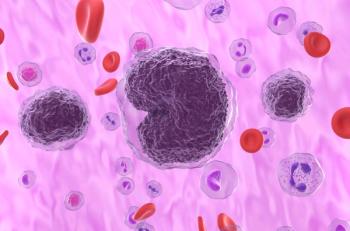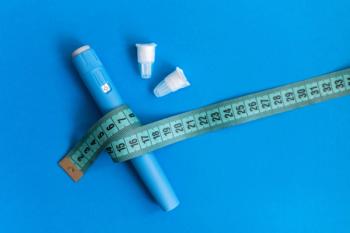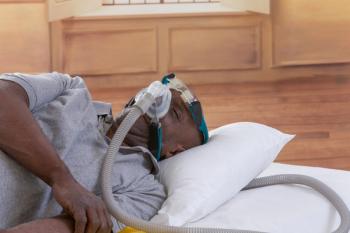
AI Matches Physician Accuracy in Insulin Dosing for T2D
Key Takeaways
- Artificial intelligence (AI) can match physician insulin dosing, maintaining target blood sugar levels in patients with type 2 diabetes.
- A study showed an AI-based insulin decision support system's efficacy and safety, though generalizability is limited by study location and duration.
Artificial intelligence (AI) can enhance insulin dosing accuracy for hospitalized patients with type 2 diabetes (T2D), improving glycemic control and streamlining physician workflows.
Artificial intelligence (AI) can be used to accurately adjust insulin doses for patients with
Between 2018 and 2030, total insulin usage worldwide is expected to increase by more than 20%; however, not even one-third of patients with T2D who are treated with insulin achieve their glycemic goals.
“This suboptimal glycemic control is attributed partly to the prescription complexity, clinical inertia, and fear of hypoglycemia in insulin titration,” the authors explained.
Technology is increasingly being leveraged to improve glycemic control for patients with T2D. A decade ago, research into insulin pumps found patients using these machines achieved superior glycemic control and needed less insulin than patients receiving their insulin through injections.2 Glucose monitors and sensors are also incorporating AI to better analyze health patterns and provide actionable insights, such as Dexcom’s Stelo and Roche’s Accu-Chek SmartGuide.3,4
“Optimal insulin therapy is crucial for improving glycemic control and reducing complications for T2D,” the authors wrote. “Despite the emergence of digital insulin-titration technologies, few are implemented in clinical practice.”
The AI-based insulin clinical decision support system (iNCDSS) was created to leverage personalized algorithms. This latest study was a multicenter, single-blind, parallel randomized clinical trial (RCT) conducted at 3 hospitals in China to assess the efficacy and safety of the iNCDSS in hospitalized patients with T2D compared with standard therapy administered by senior endocrinology physicians.
A total of 305 individuals were screened between October 1, 2021, and September 8, 2022; of these, 156 were excluded, and 149 patients were enrolled in the run-in phase and randomized based on baseline hemoglobin A1C (HbA1C) values of below 8.0% or 8.0% and higher to the iNCDSS group (n = 75) or the physician group (n = 74). The groups were studied for 5 consecutive days and continuous glucose monitoring was performed in both groups.
The mean (SD) age of participants was 64.2 (12.0) years, and 43.6% were female. The mean HbA1C at enrollment was 9.0% (1.1%). The proportion of patients who had time in the target glucose range was 76.4% in the iNCDSS group and 73.6% for the physician group. Regardless of the insulin regimen, the TIR was higher in the iNCDSS group compared with the physician group:
- 78.6% vs 65.0% for basal insulin
- 74.7% vs 74.5% for premixed or biphasic insulin
- 81.1% vs 73.3% for basal-bolus insulin
There were no significant differences between the groups in the number of patients who experienced an adverse event.
Nearly all (98.9%) of the iNCDSS recommendations were adopted by physicians during the intervention, and physicians who completed satisfaction questionnaires at the bedside indicated they found the system’s interface clear, time-saving, effective, and safe. Using a 5-point Likert scale, the overall satisfaction score was a 4.1 out of 5.0.
Despite the strengths of this study as an RCT, the fact that all participating sites were Chinese hospitals potentially limits the generalizability of the findings. In addition, the short duration of the trial may not reflect long-term glycemic control.
“The system demonstrated efficacy and safety in insulin dosage titration, showing noninferiority compared with the performance of senior physicians in treating hospitalized patients with T2D in specialized endocrinology wards,” the authors concluded. “Additional studies are needed to evaluate the efficacy and safety of the iNCDSS in specific patient cohorts to facilitate its widespread adoption by health care systems.”
References
1. Ying Z, Fan Y, Chen C, et al. Real-time AI-assisted insulin titration system for glucose control in patients with type 2 diabetes: a randomized clinical trial. JAMA Netw Open. 2025;8(5):e258910. doi:10.1001/jamanetworkopen.2025.8910
2. Caffrey M. Switch from injections to insulin pumps brings rapid glycemic control in type 2 diabetes study. AJMC®. April 13, 2016. Accessed May 29, 2025.
3. Dexcom launches the first generative AI platform in glucose biosensing. News release. News release. Dexcom; December 17, 2024. Accessed May 29, 2025.
4. Hale C. Roche introduces AI-powered diabetes tracker to predict blood sugar highs and lows. Fierce Biotech. March 8, 2024. Accessed May 29, 2025.
Newsletter
Stay ahead of policy, cost, and value—subscribe to AJMC for expert insights at the intersection of clinical care and health economics.













































